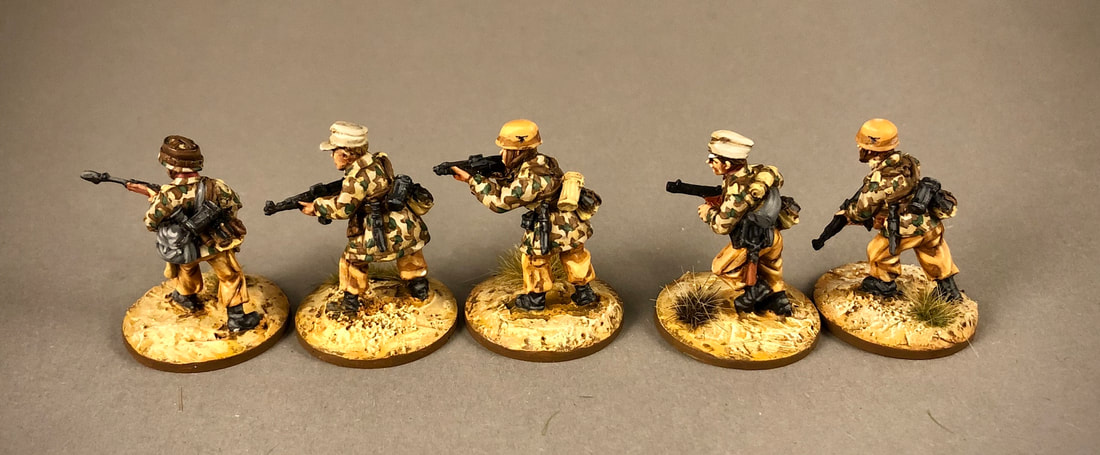The Battle of the Mediterranean was the name given to the naval campaign fought in the Mediterranean Sea during World War II, from 10 June 1940 to 2 May 1945. For the most part, the campaign was fought between the Italian Royal Navy (Regia Marina), supported by other Axis naval and air forces, and the British Royal Navy, supported by other Allied naval forces, such as. The thesis begins with an understanding that the post WW II world will be split into a US-dominated bloc and a Russian-dominated bloc. Kojeve called on France to develop a third bloc - which he called the Latin bloc. This bloc would be composed of groups of nations bordering the Mediterranean and which share a certain cultural sensibility. The Renaissance Blog. What started as a blog about Renaissance gaming in general quickly turned into a blog about samurai miniatures. Jonas is to blame for this. March 2022 January 2021 December 2020 January 2020 October 2019 July 2019 June 2019 November 2018 October 2018 June 2017 February 2016 January 2016 December 2015 July 2015.
- Mediterranean Ww2 Blog Contents Kriget Kommer Apa
- Mediterranean Ww2 Blog Contents Kriget Kommer 2018
- Mediterranean Ww2 Blog Contents Kriget Kommer 2016
- Mediterranean Ww2 Blog Contents Kriget Kommer Pdf
At the outbreak of World War II, the primary concerns of the British Navy were to defend Great Britain from invasion and to retain command of the ocean trading routes, both in order to protect the passage of essential supplies of food and raw materials for Britain and to deny the trading routes to the Axis powers, thus drawing tight once again the blockade that had proved so successful during World War I. Britain had adequate forces of battleships, aircraft carriers, cruisers, and other ships to fulfill these tasks.
The German Navy’s role was to protect Germany’s coasts, to defend its sea communications and to attack those of the Allies’, and to support land and air operations. These modest goals were in keeping with Germany’s position as the dominant land-based power in continental Europe. Germany’s main naval weapon during the war was to be the submarine, or U-boat, with which it attacked Allied shipping much as it had in World War I.
German control of the Biscay ports after the fall of France in June 1940 provided the U-boats with bases from which they could infest the Atlantic without having to pass either through the Channel or around the north of the British Isles at the end of every sortie. Thenceforward, so long as naval escorts for outgoing convoys from the British Isles could go only 200 or 300 miles out to sea before having to turn back to escort incoming convoys, the U-boats had a very wide field for free-ranging activity: sinkings rose sharply from 55,580 tons in May 1940 to 352,407 tons in October, achieved mainly by solitary attacks by single U-boats at night. But the beginning of lend-lease and the freeing of British warships after the German invasion threat waned enabled the British to escort their convoys for 400 miles by October 1940 and halfway across the Atlantic by April 1941. Since air cover for shipping could also be provided from the British Isles, from Canada, and from Iceland, the Atlantic space left open to the U-boats was reduced by May 1941 to a width of only 300 miles. Moreover, British surface vessels had the ASDIC (Anti-Submarine Detection Investigation Committee) device to detect submerged U-boats. By the spring of 1941, under the guidance of Admiral Karl Dönitz, the U-boat commanders were changing their tactic of individual operation to one of wolf-pack attacks: groups of U-boats, disposed in long lines, would rally when one of them by radio signaled a sighting and overwhelm the convoy by weight of numbers. Between July and December 1941 the German U-boat strength was raised from 65 to more than 230.
Furthermore, the German surface fleet became more active against Allied seaborne trade. Six armed German raiders disguised as merchantmen, with orders to leave convoys alone and to confine their attacks to unescorted ships, roamed the oceans with practical impunity from the spring of 1940 and had sunk 366,644 tons of shipping by the end of the year. German battleships—the Admiral Scheer, the Admiral Hipper, the Scharnhorst, and the Gneisenau—one after another began similar raiding operations, with considerable success, from October 1940; and in May 1941 a really modern battleship, the Bismarck, and a new cruiser, the Prinz Eugen, put out to sea from Germany. The Bismarck and the Prinz Eugen, however, were located by British reconnaissance in the North Sea near Bergen, and an intensive hunt for them was immediately set in motion. Tracked from a point northwest of Iceland by two British cruisers, the two German ships were engaged on May 24 by the battle cruiser Hood and by the new battleship Prince of Wales; and, though the Hood was sunk, the Bismarck ’s fuel supply was put out of action, so that its commander, Admiral Günther Lütjens, decided to make for the French coast. Separating from the Prinz Eugen (which escaped), the Bismarck threw off her pursuers early on May 25 but was sighted again the next day some 660 miles west of Brest. Paralyzed by torpedo aircraft from the Ark Royal, it was bombarded by the King George V, the Rodney, and the Dorsetshire on May 27 and sank.
Mediterranean Ww2 Blog Contents Kriget Kommer Apa

Mediterranean Ww2 Blog Contents Kriget Kommer 2018


Mediterranean Ww2 Blog Contents Kriget Kommer 2016

Mediterranean Ww2 Blog Contents Kriget Kommer Pdf
In the Mediterranean the year 1941 ended with some naval triumphs for the Axis: U-boats torpedoed the Ark Royal on November 13 and the Barham 12 days later; Italian frogmen, entering the harbour of Alexandria, on December 19 crippled the battleships Queen Elizabeth and Valiant; and two British cruisers and a destroyer were also sunk in Mediterranean waters in December.